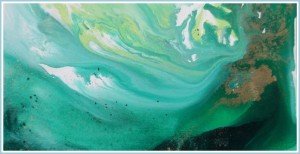 Fluid art is a type of abstract painting that involves the use of paints with a watery consistency and special techniques to create a flowing, organic look. To create a fluid art painting, you will need the following materials:
Fluid art is a type of abstract painting that involves the use of paints with a watery consistency and special techniques to create a flowing, organic look. To create a fluid art painting, you will need the following materials:
- Acrylic paints: These paints are water-soluble, so they can be thinned with water and are easy to clean up.
- Canvas or paper: You will need a surface to paint on. Canvas is a popular choice, but you can also use watercolour paper or any other surface that can hold up to water-based paints.
- Mixing cups or palette: You will need a place to mix your paints and create new colours.
- Stir sticks or palette knives: You will use these to mix your paints and apply them to the canvas.
- Water: You will need water to thin your paints and clean your tools.
To create a fluid art painting, you will need to follow these steps:
- Prep your canvas: Make sure your canvas is clean and dry. If you are using a new canvas, you may want to prime it first to create a better surface for your paints.
- Level the canvas – make sure the canvas is level by using a spirit level so that the paint doesn’t run off the side.
- Choose your colours: Decide on the colours you want to use for your painting. You can mix your own colours by combining different shades of acrylic paint, or you can use pre-mixed colors. It is usually best not to use too many colours so that they don’t get muddy.
- Thin your paints: Fluid art requires thin, watery paints. To achieve this consistency, add a small amount of water to your paints and mix well. You can also use a pouring medium to help the paint flow more easily.
- Pour your paints: Once your paints are thinned, you can begin pouring them onto the canvas. You can pour them directly from the tube or mix them in a cup first. Experiment with different pouring techniques to create different effects.
- Move the canvas: Once you have poured your paints onto the canvas, you can tilt and rotate the canvas to move the paints around and create different patterns or you can use a hairdryer or straw to blow the paint.
- Add details: If you want to add more detail to your painting, you can use a brush or other tool to draw lines or make other marks in the wet paint. You could also use gold or silver powder to add detail.
- Let it dry: Once you are satisfied with your painting, set it aside to dry completely. This can take anywhere from a few hours to a few days, depending on the thickness of the paint and the humidity in your environment.
- Varnish the painting – you can finish the painting by varnishing it or adding a coat of resin.